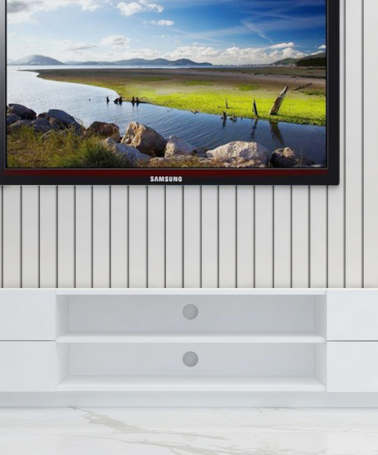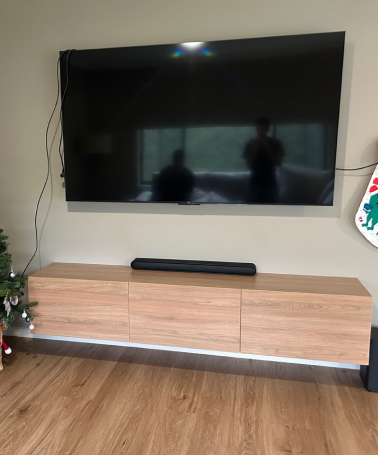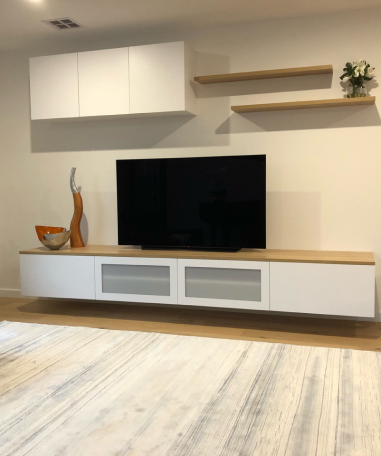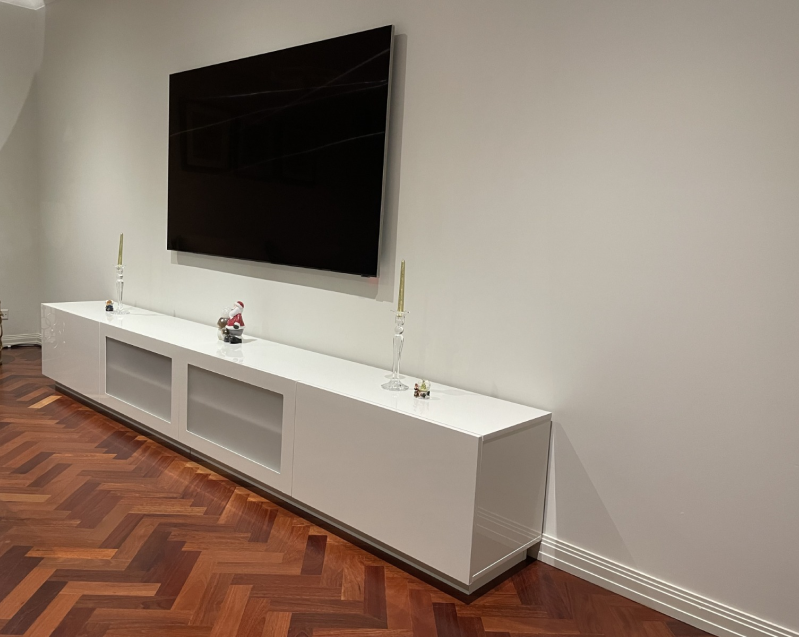TV Stands vs. Floating TV Units: Which is Right for Your Space?
7th Oct 2025
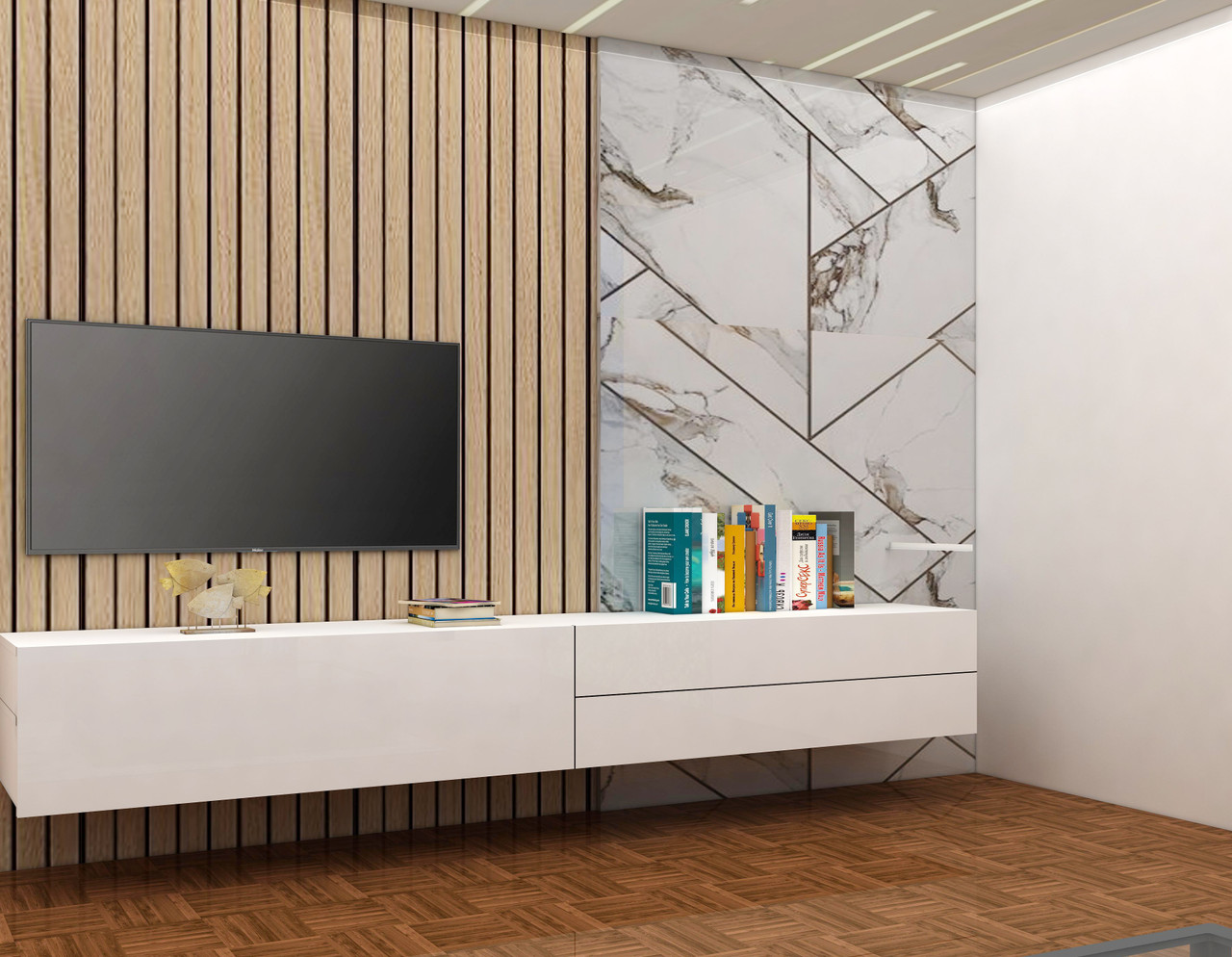
Choosing the right setup for your television can completely transform the look and feel of your living room. Whether you’re furnishing a new home or upgrading your existing furniture, one common question arises — should you choose a TV stand or a floating TV unit?
Both options have unique benefits depending on your space, layout, and personal style. This guide will help you understand the pros and cons of each so you can make the right choice for your home.
What is a TV Stand?
A TV stand is a traditional freestanding unit designed to support your television and store media equipment such as consoles, remotes, and sound systems. These stands come in a variety of designs, from classic timber units to sleek modern entertainment cabinets.
TV stands are especially popular among homeowners who prefer flexibility — you can easily move or reposition them as your room layout changes.
Benefits of a TV Stand:
-
Easy to install: No wall mounting required.
-
Flexible placement: Can be moved to suit your living room arrangement.
-
Ample storage: Many models include drawers, cupboards, and shelving.
-
Classic look: Pairs well with traditional interiors or spaces with warm décor tones.
For customers across Australia, options like Entertainment Units Brisbane and TV Cabinets Sydney offer excellent examples of stylish and functional designs.
What is a Floating TV Unit?
A floating TV unit, often referred to as a wall-mounted entertainment unit, is installed directly onto the wall. This creates a sleek, modern look that’s perfect for minimalist and contemporary spaces.
These units free up valuable floor space and make your living room appear larger and more open. Floating designs are a popular trend in modern Australian homes due to their streamlined appearance and practical cable management.
Benefits of a Floating TV Unit:
-
Space-saving design: Ideal for small apartments and open-plan layouts.
-
Modern aesthetic: Creates a clean, uncluttered look.
-
Custom height: Can be installed at your preferred viewing level.
-
Easy cleaning: No legs or base, making it simpler to vacuum or mop underneath.
Key Differences Between TV Stands and Floating TV Units
| Feature | TV Stand | Floating TV Unit |
| Installation | Freestanding | Wall-mounted |
| Mobility | Portable | Fixed |
| Storage Capacity | High – drawers, cupboards, shelves | Moderate – usually streamlined |
| Design Style | Traditional or modern | Minimalist and contemporary |
| Maintenance | Easy to move for cleaning | Easier floor cleaning but fixed position |
| Space Efficiency | Takes up floor space | Saves floor space |
Your choice depends largely on your room size and design preference. A TV stand suits larger or multipurpose rooms, while a floating entertainment unit is perfect for sleek, space-conscious layouts.
Which Option is Best for You?
-
Choose a TV Stand if:
You like flexible furniture arrangements, prefer traditional or timber styles, or need maximum storage space. -
Choose a Floating TV Unit if:
You want a clean, modern aesthetic, have limited floor space, or prefer a wall-mounted setup with hidden cables.
In cities like Brisbane, where open-plan living is common, modern entertainment units are increasingly popular. Meanwhile, in Sydney, stylish timber TV cabinets remain a favourite for homeowners who value timeless design and craftsmanship.
Styling Tips for Either Choice
-
Pair your unit with complementary furniture such as sideboards or modern coffee tables.
-
Use soft, warm lighting to highlight your TV area.
-
Add greenery or minimal décor to maintain a balanced look.
-
Choose finishes like matte black, natural oak, or gloss white to suit your interior theme.
Final Thoughts
Whether you prefer the traditional appeal of a TV stand or the sleek design of a floating unit, both can enhance your living room when chosen thoughtfully. The key is to match the unit’s style and size with your space, décor, and lifestyle needs.
At Just Modern Furniture, you can explore a wide selection of contemporary entertainment furniture, from floating wall-mounted designs to spacious floor-standing cabinets — each crafted with quality and design in mind for Australian homes.
FAQs (Frequently Asked Question)
1. What is the main difference between a TV stand and a floating TV unit?
A TV stand is a freestanding furniture piece that sits on the floor, while a floating TV unit is wall-mounted. TV stands offer more flexibility and storage, whereas floating units save floor space and provide a sleek, modern look.
2. Which option is better for small living spaces?
A floating TV unit is generally better for small spaces. Because it’s mounted on the wall, it keeps the floor area open, making the room appear larger and less cluttered.
3. Are TV stands still popular in Australia?
Yes, TV stands remain very popular in Australia. Many homeowners prefer them for their versatility, durability, and ability to fit different décor styles. They’re also easy to move, making them ideal for renters or people who like to rearrange their living spaces.
4. How difficult is it to install a floating TV unit?
Floating TV units require wall-mounting, so installation is more complex than a freestanding stand. It’s best to have a professional installer ensure the unit is properly anchored to support the weight of your TV and equipment.
5. Which option looks more modern — a TV stand or a floating TV unit?
Floating TV units tend to look more modern due to their minimalist, wall-mounted design. However, sleek timber or matte-finish TV stands can also provide a contemporary feel, depending on your styling and space.

 Search entire store here...
Search entire store here...
